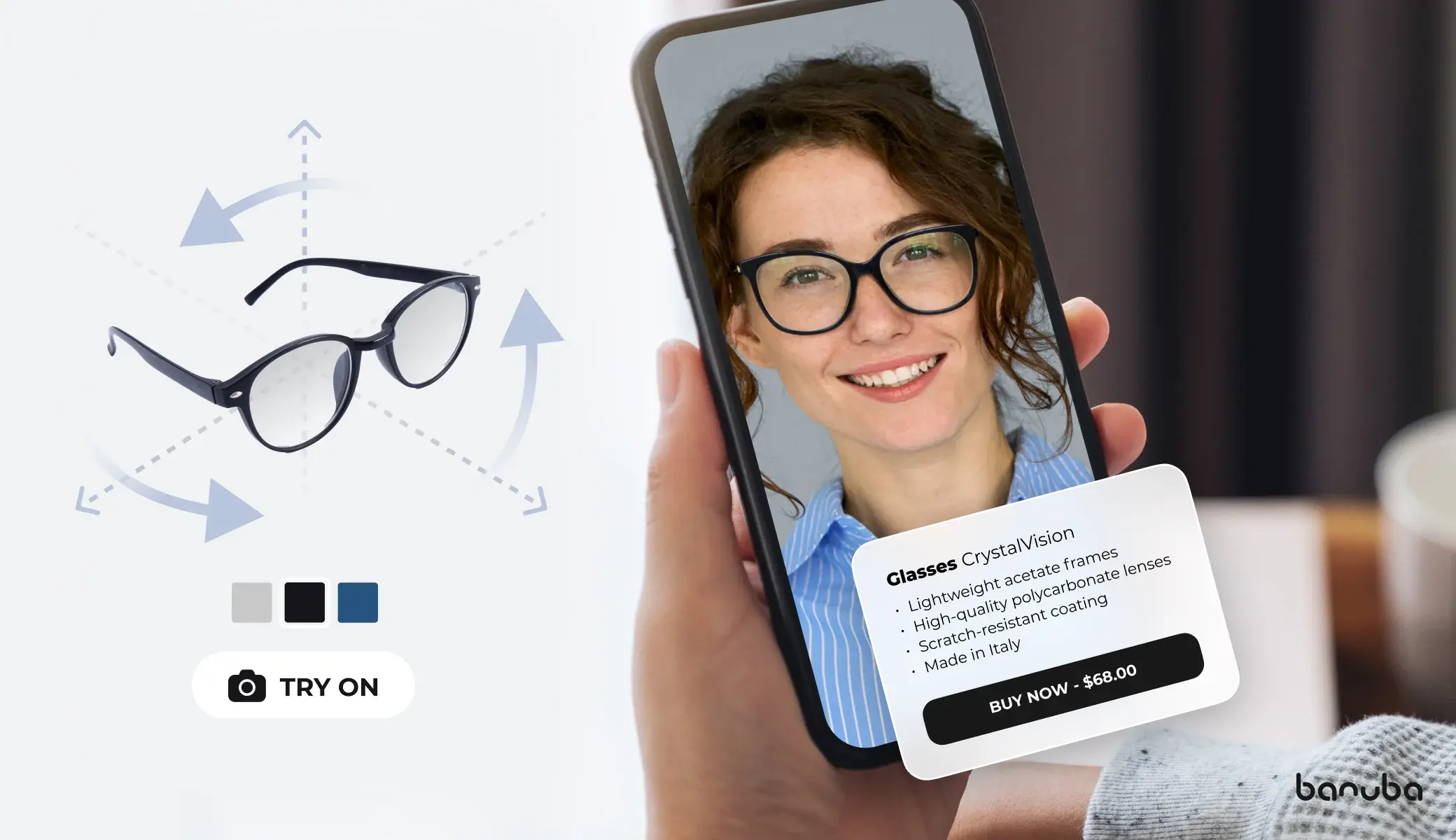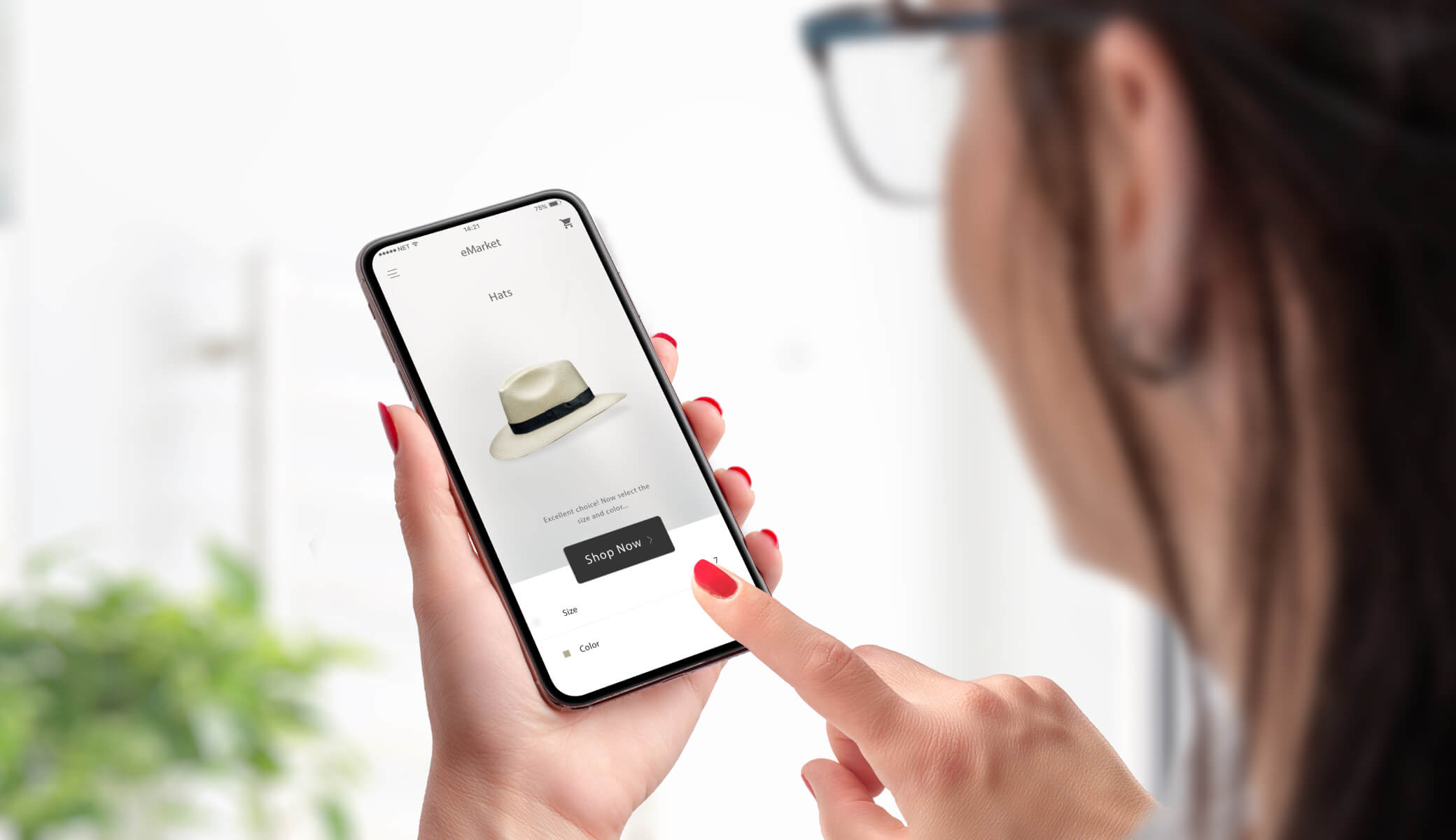[navigation]
TL;DR
- The Covid, lockdown, and the shift to millennials and Gen Z as the main target audiences have driven the AR for eCommerce boom;
- Retailers started partnering up with off-the-shelf AR and virtual try-on solutions;
- AR eCommerce is 200% more engaging, boosts conversion rates by 94%, cuts returns by 64%, and enhances AOV by 33%;
- TINT helped companies boost their ROIs, reaching almost $1M in 4 hours, finding 50 new partners, and growing the add-to-cart rate by 17.15%.
Augmented Reality and Shopping: Love Story
I won't bore you with stories about how the IKEA Place App was one of the first groundbreaking moments in using AR for sales in eCommerce in 2017. All the headlines were screaming about it. Besides, we’ve already told you everything you need to know about using augmented reality in eCommerce in the previous article. However, this love story gained depth a little later, under the influence of certain catalysts.

Locked-in and Bored
Covid 19 deprived us of the pleasure of traditional shopping. No more make-up swatches, trying-on clothes and accessories, and little or no solutions to enhance customer experience.
Businesses had to adapt quickly. Brick-and-mortar stores had to switch to eCommerce, and online stores had to invent and incorporate new features to increase customer engagement and conversion rates.
Though eCommerce revenue grew x2 in Q2 of 2020, compared to 2019, the return rates increased by 22%. That’s when brands started leveraging Augmented Reality in shopping to combat the barrier between the physical and virtual worlds.
Tech-Savvy Shoppers
Tech-savvy millennials and Generation Z have replaced the boomers. They welcome experimentation and the introduction of the latest technologies into all areas of life. Shopping is no exception.
According to a recent report by Snapchat, 93% of its users (mainly Zoomers) fancy Augmented Reality for shopping. They value personalized shopping experiences, and AR grants them one.
AR Availability for eCommerce Brands
Of course, AR was not born in a few months under the pressure of new challenges. Back in 2018, Shopify AR was introduced, which allowed creating 3D models of goods and helping merchants bring their products to life.
The AR market size was worth $5.9 billion in 2019, and it grew to $24.2 billion in 2021, and reached $42.48 billion in 2024. After the proof of concept, giants like L'Oréal started to acquire AR startups and develop their own R&D centers. But what about companies that are not giants?
Along with upgrades from eCommerce platforms, tech companies like Banuba became reliable partners for retailers and SMEs. Tough times required rapid solutions with a simple and fast integration to stay ahead of competitors. And that’s exactly what off-the-shelf virtual try-on tools bring to the table.
All these events and factors have created a tight bond between eCommerce and Augmented Reality. But what is the happy ending, and what does boosting eCommerce ROI have to do with it? How Does Augmented Reality Increase Sales?
For buyers and businesses, the developing relationship between eСommerce and AR is the most desirable reality show they can benefit from. It is a true win-win for both parties.

Benefits for Buyers
Virtual try-ons and augmented reality shopping have been a lifesaver for me personally. I no longer fear buying glasses and cosmetics online and getting a pig in a poke. However, there are many more benefits, and I am not the only one who notices them.
Enhanced Visualization
AR allows customers to visualize products in their environment or on themselves, which greatly improves purchasing confidence. Once, I ordered sunglasses that turned out to cover half of my face, though they looked great in the picture. Refunds happen, but I was still glassless and disappointed. A virtual try-on feature could have saved every party from the fuss.
Increased Organic Engagement
AR eCommerce shopping is 200% more engaging. How can you resist not trying on all the glasses on sale? Especially, when it’s effortless.
Lower Return Rates
I hate it when the image doesn’t correspond with the product. Eyeshadow and foundation swatches in studio lighting on Photoshopped skin always bothered me. No wonder the beauty industry has the highest return rates. With Augmented Reality shopping, the deal is safe—try it on and make a more informed purchase.
Personalized Shopping Experience
AR creates a more interactive shopping experience, tailoring the customer journey just for you (and me). McKinsey states that 76% would choose brands with personalization, and 66% even expect companies to foresee their desires. When AR is powered by AI, it’s like wearing the Sorting Hat—it knows what’s best for you.
Convenience
Trying on 50 shades of lipstick in PJs on my couch? Yes, please. The adaptivity of AR solutions for eCommerce strikes the imagination. According to Statista, 66% of online orders in retail are placed via smartphone. Yet, shopping through desktops and even tablets still exists. That’s why we care about the versatility of Banuba's TINT and SDKs. A smart mirror or a low-end camera? We've got it covered.
Benefits for eCommerce
While customer satisfaction is a rather abstract concept, revenue and ROI are quite definite and measurable.
Increased Conversion Rates
Perhaps, The Rolling Stones were wrong, and you can always get what you want when it comes to augmented reality sales. Integrating AR into eCommerce platforms can boost conversion rates by up to 94%. This significant increase is driven by customers' ability to interact with and visualize products more effectively. Increased conversions lead to sales—you do the aftermath.
Reduced Return Rates
Brands that leverage virtual try-ons and Augmented Reality in eCommerce see their returns cut by 64%. In addition to a pleasant Karma bonus, you increase customer satisfaction and loyalty. Leave alone the significant cost savings for brands, reducing expenses related to logistics and restocking.
Enhanced Customer Engagement
The more communication channels you offer, the higher your chances of turning a lead into a buyer. An AR-enhanced eCommerce interaction leads to almost 21% more time spent on the site or in the app. Besides, it enables seamless omnichannel sales on various channels and becomes an additional touchpoint.
Higher Average Order Value
Virtual try-on experiences are proving to be highly effective in cross- and up-selling, and make buyers feel more confident in their purchases. This increased confidence often leads to higher spending per transaction. According to Forbes, AR in eCommerce can lead to a 33% increase in AOV. And that’s the right strategy to boost ROI and revenue.
At Banuba, we took a step forward and created an AI adviser. This pro analyzes an individual’s facial features, age, hair and eye colors, and shopping preferences and behavior to offer the best-matching items. Is the customer about to leave the cart? Give them more matching products to try on.
Augmented Reality and eCommerce Success Stories
If I still haven't convinced you that there is true love between online shopping and AR and not just temporal chemistry, I'm bringing out the heavy artillery—case studies and success stories.

Oceane’s 600% Boost of Average Add-To-Cart Rate
Input: A Brazilian cosmetics producer and retailer wanted to test the virtual try-on for its foundations and concealers.
Output: Increased the average add-to-cart rate from 3% to 20.15% and sold out all their stocks.
$900,000 for Boca Rosa in 4 Hours
Input: Integrating TINT into Boca Rosa’s pre-launch party to promote their foundation sticks, powder, and multipurpose sticks.
Output: 1.7 million virtual try-on sessions and 64,413 items sold, resulting in sales worth $900,000 in 4 hours.
Smitten Cosmetics and 50 New Offline Selling Spots Worldwide
Input: Smitten Cosmetics, an Australian luxury mineral cosmetics producer, wanted to increase its market presence by offering a virtual try-on feature via TINT on its website.
Output: In less than 3 months, they signed contracts with 50 salons reselling their products globally.
Conclusion
To wrap everything up, Augmented Reality technology and eCommerce definitely know how to make their living as a couple. With higher conversions, lower returns, and increased AOV, businesses are destined to enhance their ROI. It takes two to tango—got your AR partner yet?








